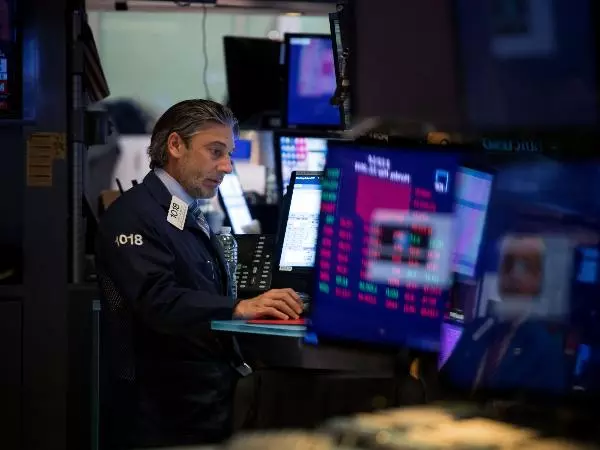The Sharpe ratio explained
We take a look at the Sharpe ratio. Find out what it is, and how it’s used to calculate past or expected performance of an investment by adjusting for its risk.

What is the Sharpe ratio?
The Sharpe ratio, named after its inventor, William F Sharpe, is designed to help investors understand the potential return of an investment compared to its risk. The higher the Sharpe ratio, the more attractive the risk-adjusted return. As a baseline, a portfolio investing solely in US Treasury bonds would have a Sharpe ratio of 0.
The Sharp ratio is designed to calculate the ‘risk-adjusted return’, i.e. the return on an investment once risk is taken into account. It is used for ‘ordinary’ portfolios of stocks, bonds, commodities etc. It is less useful for those portfolios with large movements in both positive and negative directions.
Adding investments that have low correlations to existing investments in a portfolio is designed to decrease the risk of the portfolio without sacrificing the return.
How to calculate the Sharpe ratio
The calculation used is as follows:

The Sharpe ratio can be used either to calculate past performance or expected performance in the future, using expected return and the expected risk-free rate.
To put this into an example, let us assume that an investor is planning to add a fund to a portfolio that has a return of 12% over the past year and has a current risk-free rate of 3%. The volatility of the returns was 11%:
Sharpe ratio = (12% - 3%) / 11% = 81.8% or 0.8
By adding in the new fund, the investor expects the portfolio to see its return fall to 9%, but the volatility to also fall, to 6%. If the risk-free rate remains the same, then the calculation is as follows:
Sharpe ratio = (9% - 3%) / 6% = 100% or 1
While the returns are lower, the Sharpe ratio has improved, so on a risk-adjusted basis the returns have also improved.
Essentially, the Sharpe ratio is used to determine whether the higher risk of some investments is justified. If a portfolio has higher returns, but with higher risk, it is debatable whether those risks are justified.
In general, the higher the Sharpe ratio, the more attractive a portfolio is. A Sharpe ratio of 1 is good, 2 is even better and anything 3 or above is very good.
The Sharpe ratio explained
Essentially, the ratio shows how much excess return you are receiving in return for the extra volatility endured as the ‘price’ for holding a riskier asset.
Portfolios that have a higher return, but also come with significantly higher risk, are not necessarily the best portfolio for an investor. Both traders and investors should think of volatility as the price they pay for holding assets with potentially large returns. As in most things in life, there is no ‘free lunch’ in markets, and higher returns usually imply higher volatility as well.
It is up to each investor to determine whether they are happy to bear the potential risk for the higher return. This is a matter of personal preference.
Can the Sharpe ratio be negative?
A negative Sharpe ratio either means that the risk-free rate is greater than the portfolio’s return, or that the expected return is likely to be negative. A negative Sharpe ratio conveys little in the way of useful information.
The Sharpe ratio vs the Treynor ratio
The Treynor ratio is also known as the reward-to-volatility measure. While the Sharpe ratio looks at portfolio’s return against the rate of return for a risk-free investment, the Treynor ratio looks at the portfolio against a benchmark, for example for S&P 500.
For example, a portfolio that has a return of 13%, versus an overall stock market return of 10%, will only be measured on the 3% it actually delivered over the broader market’s performance. It is useful for determining whether a carefully constructed portfolio is actually performing more effectively than a simple tracker.
This information has been prepared by IG, a trading name of IG Markets Limited. In addition to the disclaimer below, the material on this page does not contain a record of our trading prices, or an offer of, or solicitation for, a transaction in any financial instrument. IG accepts no responsibility for any use that may be made of these comments and for any consequences that result. No representation or warranty is given as to the accuracy or completeness of this information. Consequently any person acting on it does so entirely at their own risk. Any research provided does not have regard to the specific investment objectives, financial situation and needs of any specific person who may receive it. It has not been prepared in accordance with legal requirements designed to promote the independence of investment research and as such is considered to be a marketing communication. Although we are not specifically constrained from dealing ahead of our recommendations we do not seek to take advantage of them before they are provided to our clients. See full non-independent research disclaimer and quarterly summary.

Discover how to trade the markets
Explore the range of markets you can trade – and learn how they work – with IG Academy's free ’introducing the financial markets’ course.